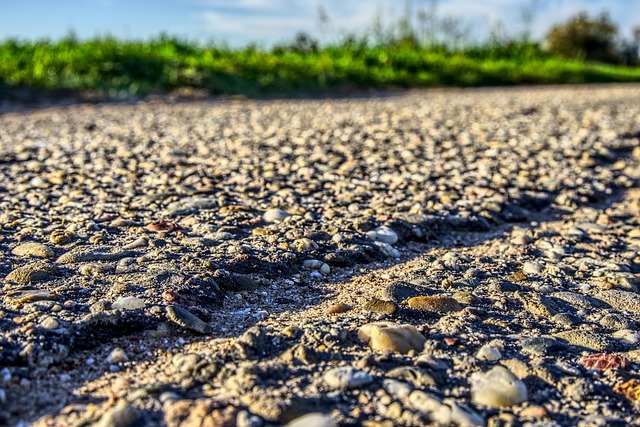When the world feels the bite of an unseasonal chill, the whisper of a distant storm, or the sudden silence after a hurricane’s roar, we are reminded that the planet’s pulse is both fragile and fierce. In the face of extreme weather, the need to awaken our collective consciousness about the environment has never been more urgent. By listening to the Earth’s signals and expanding our awareness, we can better prepare, protect, and participate in a future where climate resilience and human resilience move hand in hand.
The Science of Extreme Weather
Extreme weather events—heatwaves, wildfires, floods, tornadoes, and prolonged droughts—are not isolated incidents. They are the visible manifestations of a climate system in flux. Global temperatures have risen by roughly 1.2 degrees Celsius since pre‑industrial times, and atmospheric water vapor has increased, amplifying the intensity of storms and heatwaves. Scientists use a combination of satellite data, ground‑based observations, and climate models to understand these changes.
- Heatwaves: The frequency and severity of heatwaves have more than doubled in the last century.
- Storm intensity: Tropical cyclones now reach higher categories more often, with increased rainfall.
- Flood risk: Rising sea levels and more intense precipitation raise flood thresholds across coastal and inland regions.
- Wildfire potential: Drier soils and hotter temperatures create tinderbox conditions for forests and grasslands.
Interpreting the Earth’s Signals
Every extreme event is a message from the planet. For example, an uncharacteristically dry spring might precede a severe drought, while a sudden surge in atmospheric pressure could signal an approaching storm front. By paying close attention to these patterns—through both scientific tools and intuitive awareness—communities can anticipate risks and act preemptively.
“When we listen to the world, we learn that the Earth is not a backdrop to our lives; it is an active partner whose voice shapes our destiny.”
The Role of Consciousness in Climate Action
Consciousness, the state of awareness and understanding, is central to our response to climate change. It extends beyond individual knowledge to a shared, global sense of responsibility. When collective consciousness shifts, policy, technology, and culture follow suit.
- Recognition: Acknowledging the human contribution to greenhouse gas emissions and the urgent need to reduce them.
- Responsibility: Embracing stewardship of the planet by adopting sustainable practices at home and in industry.
- Innovation: Cultivating ideas that reimagine energy, agriculture, and transportation to align with ecological limits.
Pathways to Awakening
There are practical steps for individuals and communities to raise their environmental consciousness. These steps begin with education and grow into action.
- Learning the science: Attend workshops, read reputable sources, and engage in discussions that clarify climate data.
- Assessing personal footprints: Use simple online tools to calculate carbon footprints and identify reduction opportunities.
- Community engagement: Join local environmental groups, support policy initiatives, and volunteer for restoration projects.
As each layer of awareness builds, the collective pulse strengthens, leading to larger, more coordinated efforts.
Strategies for Mitigating Extreme Weather
Mitigation involves reducing the sources of climate change, while adaptation focuses on minimizing its impacts. Both are essential in a world where extreme weather will continue to test societies.
- Decarbonization of energy: Transitioning from fossil fuels to renewables like solar, wind, and hydroelectric power.
- Urban greening: Planting trees and creating green roofs to lower temperatures and absorb carbon dioxide.
- Water‑wise agriculture: Implementing drip irrigation and drought‑resistant crops to conserve water.
- Infrastructure resilience: Building levees, floodwalls, and storm‑ready structures to protect vulnerable populations.
Each strategy not only reduces emissions but also enhances the capacity of ecosystems to buffer against climate shocks.
Case Studies of Success
Several cities and regions have demonstrated that a heightened environmental consciousness can drive tangible results.
- Reykjavík, Iceland: The city’s commitment to geothermal energy and carbon neutrality showcases how a collective mindset can transform urban life.
- Bhutan: Its constitution mandates maintaining 60% forest cover, aligning national policy with ecological balance.
- San Francisco, California: A strong civic culture around sustainability has led to aggressive recycling and zero‑emission vehicle mandates.
These examples illustrate that when a community’s consciousness embraces environmental stewardship, it can enact policies that endure for generations.
Global Governance and the Consciousness Shift
International agreements like the Paris Accord depend on each nation’s willingness to honor their commitments. The shift in collective consciousness is evident when countries adopt ambitious targets and invest in climate finance. Transparency, accountability, and knowledge sharing create a network of trust that amplifies the impact of individual actions.
Education and the Next Generation
Incorporating climate science into school curricula is a powerful way to embed consciousness early. By fostering critical thinking and problem‑solving skills, educators can inspire students to become future leaders in sustainability.
The Human Experience in a Warming World
Beyond the numbers, extreme weather touches lives in intimate ways. Families lose homes to floods, farmers face crop failures, and communities grapple with health risks from heat. These human stories underscore the urgency of nurturing a compassionate and conscious global community.
Building Resilience Through Empathy
Resilience is more than infrastructure; it is an emotional and social readiness to adapt. Cultivating empathy for those most affected by climate events encourages solidarity and coordinated action. This shared consciousness fosters a sense of unity that can overcome political divisions.
Looking Ahead: A Conscious Future
While the challenges of extreme weather are daunting, the path forward is illuminated by a growing awareness of our interconnectedness with the planet. By expanding our consciousness to include ecological limits, we can reframe our relationship with nature from exploitation to partnership.
Personal Commitments for Change
Individuals can begin by adopting simple practices that reflect a conscious lifestyle.
- Reduce, reuse, recycle: Minimize waste and extend product lifespans.
- Choose sustainable transport: Walk, bike, or use public transit when possible.
- Support renewable energy: Advocate for community solar projects or purchase green power from providers.
- Educate others: Share knowledge about climate science and practical solutions with friends and family.
These actions, though small individually, aggregate into a powerful force that can reshape our collective future.




